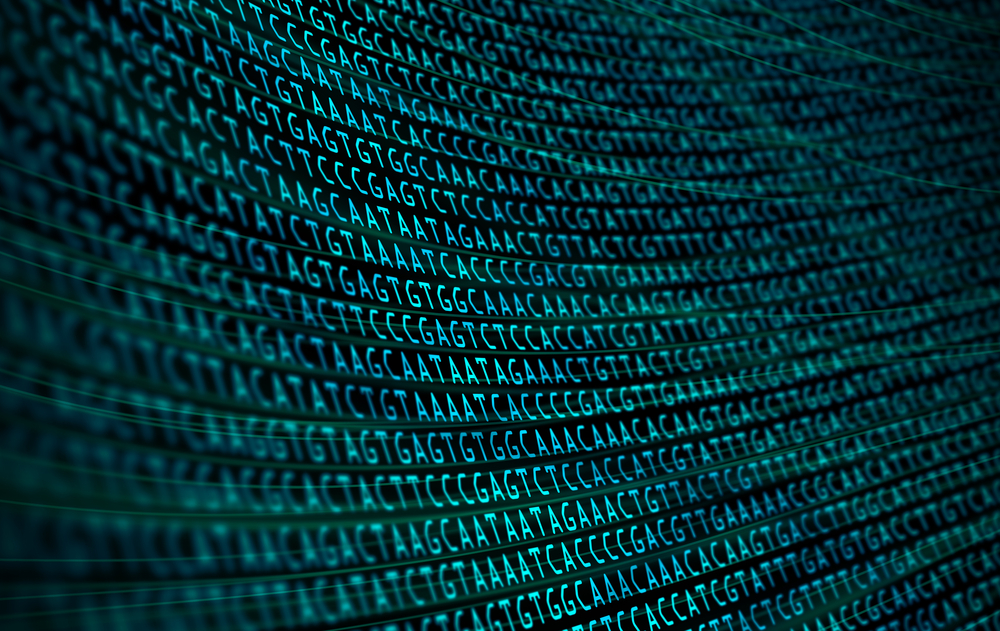Genomic Recycling May Help Explain Our Unique Non-Coding Genome
Written by |

Throughout evolution, genomic recycling of protein-coding genes gave rise to part of non-coding genes within our genome, known as long non-coding RNAs, or lncRNAs, a Weizmann Institute of Science study suggests. The findings will help scientists understand the role of lncRNAs in healthy and diseased conditions, such as Angelman syndrome.
The study, “A subset of conserved mammalian long non-coding RNAs are fossils of ancestral protein-coding genes,” was published in the journal Genome Biology.
With the advent of genomic sequencing, scientists have discovered that we share a significant amount of genes with chimps, birds, and other living creatures. However, the shared percentage is only for the so-called protein-coding genes, i.e., those encoding instructions to make proteins. A significant part of our genome, however, is constituted by regulatory genes, which do not encode for proteins and seem to be unique to us.
“Humans and fish, for instance, share about 70% of their protein-coding genes, but only about 0.5% of an important class of regulatory genes — ones that give rise to so-called long non-coding RNAs, or lncRNAs,” Dr. Igor Ulitsky of the Biological Regulation Department at the Weizmann Institute of Science, said in a press release.
While protein-coding genes used to receive scientists’ full attention, the non-coding part of our genome, including lncRNAs, are now increasingly recognized to fulfill key roles. Present at similar numbers as protein-coding genes — roughly 20,000 lncRNA genes have been identified in our genome — they were found to be master switches of several regulatory processes.
They regulate other genes by turning them on or off. Thus, they have key roles during development and may affect disease onset and progression.
The majority of human lncRNAs seem to be unique to our species, but how they appear in the genome of mammals remains largely unknown. Now, a group of scientists at the Weizmann Institute of Science, in Israel, discovered that a group of mammalian lncRNAs evolved from older genes by taking on new functions.
The researchers hypothesized that one potential source of lncRNAs would be protein-coding genes that had lost their function. These genes would then be recycled into a new function.
“Just as bricks from a ruined monument can help to build a new house, so genes that went out of use can find new roles in the cell in the course of evolution,” Ulitsky, the study’s lead author, said.
After developing a series of computational algorithms, researchers first identified almost 1,000 protein-coding genes in chickens, fish, lizards, and other non-mammalian vertebrates that are no longer present in humans, dogs, sheep, and other mammals.
They hypothesized that some of these genes may have been converted to lncRNAs in mammals. After a thorough analysis, which included examining neighboring genes in the vicinity of lncRNAs, researchers found that about 2-3% of lncRNAs in mammals (up to 60 lncRNA genes) came from ancestral genes that have lost their protein-coding ability.
“It is hard to know what caused these genes to lose their protein-coding potential more than 200 million years ago, when mammals evolved from their vertebrate ancestors,” Ulitsky said. “But the fact that these genes have been conserved in the genome for so long suggests that they play important roles in the cell.”
Identifying the precursor genes of our lncRNAs may help scientists understand what happens when lncRNAs’ function is disrupted.
“In recent years, lncRNAs were found to be important for the activation or repression of genes relevant to a variety of disorders. It may one day be possible to treat these disorders by targeting the lncRNAs so as to reprogram entire gene regulatory networks. For example, in a study in mice, researchers at the Baylor College of Medicine in Houston, Texas, had averted progression of Angelman syndrome, caused by mutations on chromosome 15, by silencing a particular lncRNA — to unleash expression of a gene that it represses,” Ulitsky concluded.





